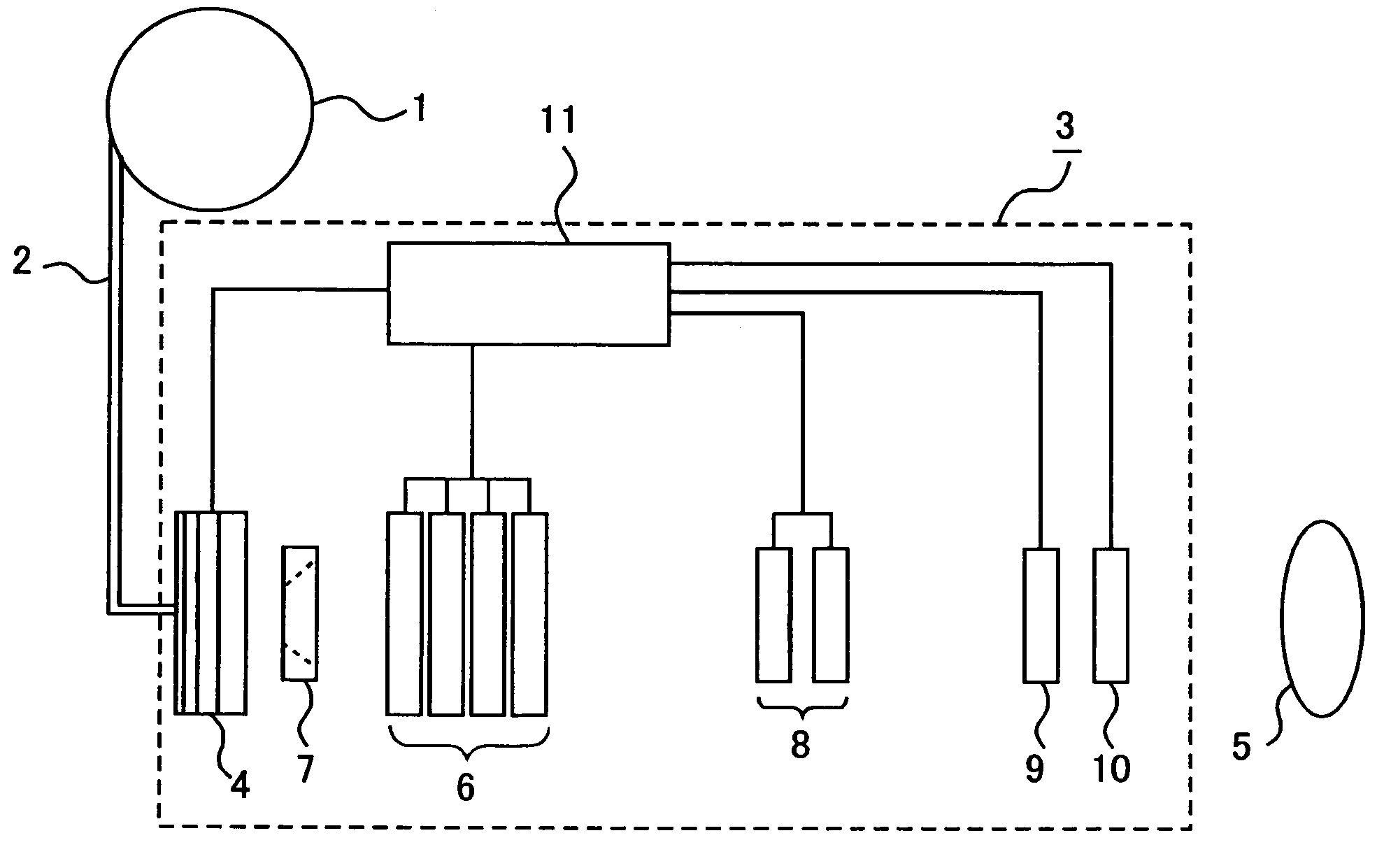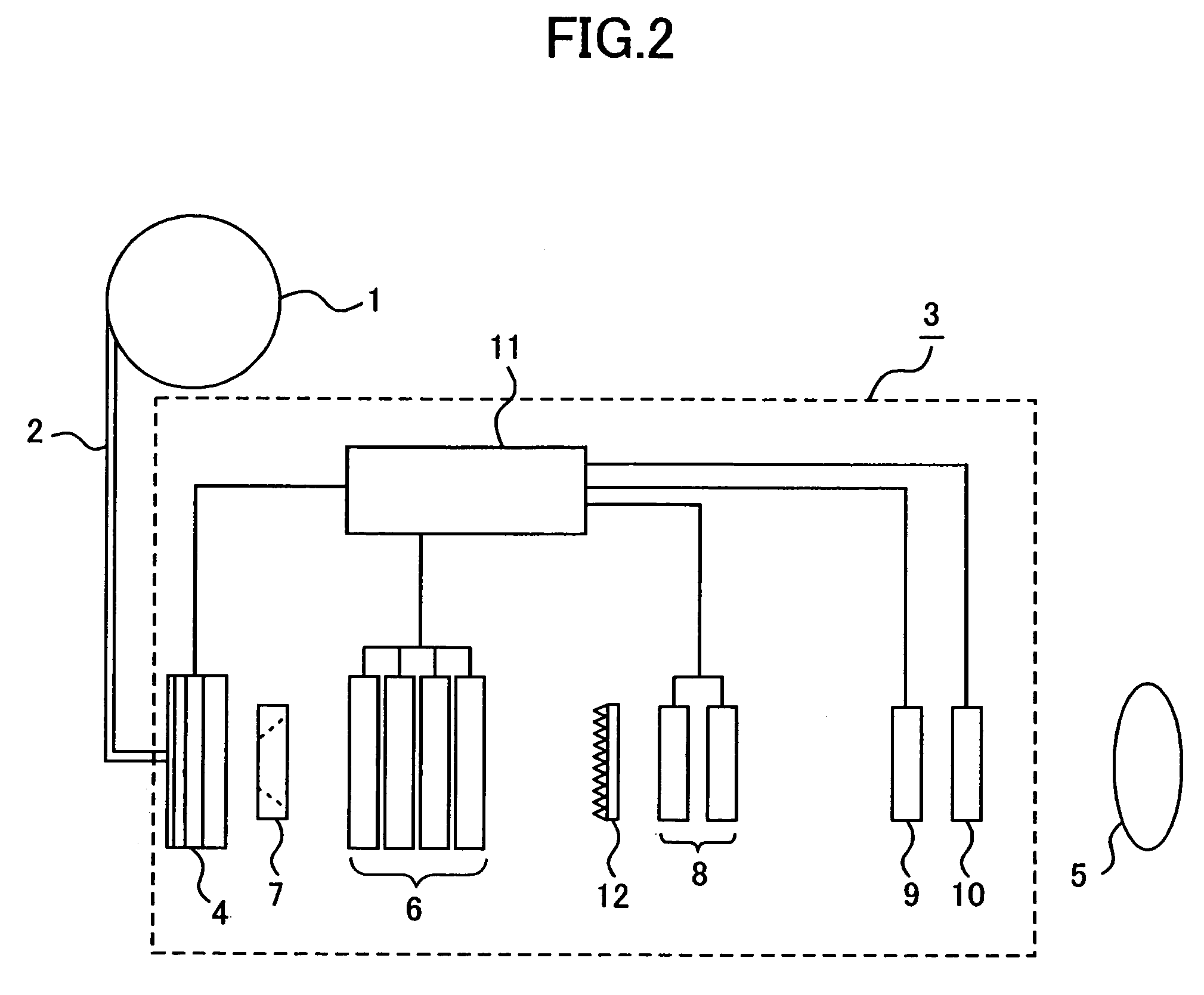Particle-beam exposure apparatus and particle-beam therapeutic apparatus
a technology which is applied in the field of exposure apparatus and exposure apparatus of particle beam therapy, can solve the problems of inability to narrow the diameter of charged particle beam to the needed size, patient intimidation by movement noise, etc., and achieve spatially accurate exposure into the target, reduce the effect of diameter increas
- Summary
- Abstract
- Description
- Claims
- Application Information
AI Technical Summary
Benefits of technology
Problems solved by technology
Method used
Image
Examples
embodiment 1
[0016]Hereinafter, a particle-beam exposure apparatus, and a particle-beam therapeutic apparatus composed of this particle-beam exposure apparatus, a particle accelerator, and a beam transport system, according to Embodiment 1 of the present invention, are explained based on FIG. 1. In FIG. 1, after a charged particle beam generated in a particle accelerator 1 is introduced into a particle-beam exposure apparatus 3 through a beam transport system 2, first, the charged particle beam passes through a variable-type range shifter 4 for decreasing, by passing through an acrylic board therein, the energy of the charged particle beam. A set of quadrupole magnets 6 for reducing diameter increase of the charged particle beam due to the variable-type range shifter 4 is placed between this variable-type range shifter 4 and a target 5 to be exposed. Moreover, a fixed-type beam slit 7, whose aperture diameter is fixed, for limiting increase of the divergence angle of the charged particle beam is...
embodiment 2
[0029]If the acrylic board is not inserted into the variable-type range shifter 4, the divergence at the variable-type range shifter 4 is prevented; however, thus, when the varying of the divergence angle at the variable-type range shifter 4 is widened, the beam-diameter control becomes complicated. In a particle-beam exposure apparatus and a particle-beam therapeutic apparatus according to Embodiment 2, as represented in FIG. 3, by providing a thin beam scatterer 13 composed of, for example, a tungsten or a lead thin film, even when the acrylic board is not inserted into the variable-type range shifter 4, the divergence angle of the charged particle beam being incident onto the set of quadrupole magnets 6 is made to be widened; thereby, the varying ratio of the divergence angle due to varying of the thickness of the acrylic board included in the variable-type range filter 4 is made to be relatively small. By providing the beam scatterer 13, it is prevented that the magnetization am...
embodiment 3
[0030]In Embodiment 1, in order to decrease the charged-particle-beam energy, the case in which only the variable-type range shifter 4 provided at the upstream side apart from the target 5 along the beam traveling direction is used has been explained; however, as represented in FIG. 4, by providing a fixed-type range shifter 14 close to the target 5, the charged-particle-beam energy being incident onto the target 5 can also be decreased at the downstream side of the set of quadrupole magnets 6 along the beam traveling direction. When the charged-particle-beam energy is decreased using the variable-type range shifter 4 into a value where the beam is stopped at the surface proximity of the target 5, because the momentum width of the charged particle beam passing through the variable-type range shifter 4 significantly increases, the beam focusability of the set of quadrupole magnets 6 decreases due to the effect of the chromatic aberration; accordingly, the charged-particle-beam diamet...
PUM
 Login to View More
Login to View More Abstract
Description
Claims
Application Information
 Login to View More
Login to View More - R&D
- Intellectual Property
- Life Sciences
- Materials
- Tech Scout
- Unparalleled Data Quality
- Higher Quality Content
- 60% Fewer Hallucinations
Browse by: Latest US Patents, China's latest patents, Technical Efficacy Thesaurus, Application Domain, Technology Topic, Popular Technical Reports.
© 2025 PatSnap. All rights reserved.Legal|Privacy policy|Modern Slavery Act Transparency Statement|Sitemap|About US| Contact US: help@patsnap.com



